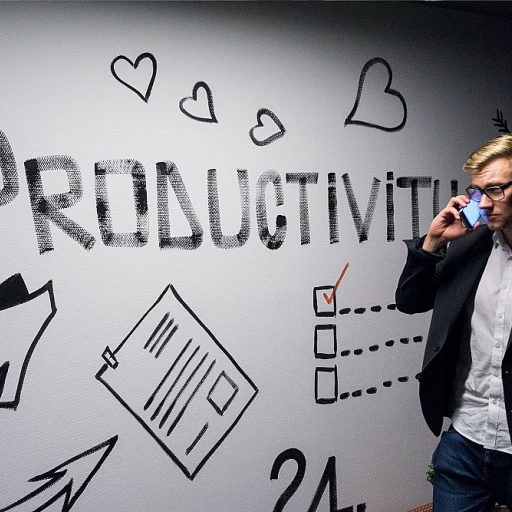
Understanding the Work-Life Balance Dilemma
Decoding the Work-Life Equation
The balance between work and life can often feel elusive, particularly in today’s fast-paced environment. Many employees, especially in sectors that demand constant attention like health care and consulting, find themselves in a conundrum trying to juggle professional commitments with personal life needs. The question of how to achieve this balance is pertinent, affecting not just individual well-being but also organizational productivity and engagement. Modern employment dynamics in large enterprises such as Kaiser Permanente emphasize the importance of work-life harmony. Kaiser, a renowned organization in the medical and health care sector, demonstrates a strong commitment to its employees' well-being. With more than a touch of responsibility, positions like the director of human resources and resources consultants are tasked with ensuring that policies align with an employee’s ability to maintain a healthy work-life balance. The necessity of a sustainable work-life balance is increasingly recognized, impacting various facets such as mental health and overall employee satisfaction. For instance, in roles that involve employee labor relations or high-demand jobs in both the northern California and Washington regions, it's crucial to maintain flexibility and support through comprehensive health plans and privacy policies, ensuring that job roles do not spill completely into private life. Permanent changes to systems, like business partners investing in innovative resources, also play a significant role here. Ultimately, it is vital for employees and employers alike to recognize the significance of achieving this equilibrium. By potentially integrating work-life balance strategies into the organizational ethos, as detailed in resources exploring workforce performance, companies can foster an environment that not only enhances performance but enriches the quality of life for their teams. Enhancing workforce performance through work-life balance strategies provide grounding principles for this balancing act in today's business landscape.Kaiser HR's Approach to Employee Well-Being
Prioritizing Employee Well-Being
Kaiser Permanente has long been recognized for its commitment to employee well-being, setting a benchmark in the industry for how organizations can support their workforce. The company’s approach to human resources is centered around creating a supportive environment that prioritizes health and wellness. This is not just about offering medical benefits but also about fostering a culture where employees feel valued and cared for.
Comprehensive Health Plans
At the core of Kaiser’s strategy is its comprehensive health plan offerings. These plans are designed to cater to the diverse needs of their employees, ensuring access to high-quality health care services. From urgent care to mental health support, Kaiser Permanente provides a range of resources that help employees maintain their physical and mental health. This holistic approach is a key factor in promoting a balanced work-life dynamic.
Flexible Work Policies
Flexibility is another cornerstone of Kaiser’s HR strategy. Recognizing the varied demands of modern life, Kaiser offers flexible work arrangements that allow employees to better manage their time. Whether it’s through remote work options or adjustable work hours, these policies empower employees to find a balance that suits their personal and professional lives. This flexibility is crucial in reducing stress and enhancing job satisfaction.
Supportive Resources and Services
Kaiser Permanente also invests in resources that support employee development and well-being. This includes access to resources consultants and business partners who provide guidance on navigating work-life challenges. Additionally, the organization’s privacy policy ensures that employees can seek help with confidence, knowing their personal information is protected.
Commitment to Continuous Improvement
Finally, Kaiser’s approach to employee well-being is characterized by a commitment to continuous improvement. By regularly reviewing and updating their policies, they ensure that their strategies remain relevant and effective. This proactive stance helps Kaiser Permanente stay ahead of emerging trends in work-life balance, positioning them as a leader in the field.
For more insights into how organizations like Kaiser are recognizing the hidden truths of work-life balance, explore this resource.
Practical Tips for Achieving Work-Life Harmony
Tips to Cultivate Work-Life Synergy
Achieving a harmonious balance between work responsibilities and personal life is more significant than ever in today's fast-paced environment. Employers like Kaiser are at the forefront, encouraging holistic employee well-being through thoughtful strategies and benefits. Here are practical steps that individuals and organizations alike can adopt to cultivate work-life synergy:1. Establish Clear Boundaries
Creating defined boundaries between work and personal time is a cornerstone of work-life balance. It reduces stress and enhances focus during work hours. Employees should communicate their availability clearly to colleagues and supervisors to ensure personal time is respected.2. Leverage Employee Benefits
Organizations offering comprehensive benefits provide their employees with essential resources. Kaiser's health care plan includes medical and mental health services that help maintain well-being. Utilizing such benefits can reduce stress and enhance productivity.3. Utilize Flexible Work Arrangements
With the evolution of jobs in the United States, many companies offer flexible work arrangements. This element of human resource policy allows employees to manage their time more effectively, reducing the tension between work obligations and personal commitments.4. Prioritize Time Management
Effective time management is crucial to balancing work and life. Employees are encouraged to plan their schedules meticulously, focusing on urgent care tasks first and allocating time for personal endeavors without overlap.5. Embrace Technology
Kaiser Permanente’s initiatives highlight the role of technology in work-life balance. By integrating tools that enhance productivity and communication, such as comprehensive digital health wellness platforms, employees can streamline their work processes and free up more time for leisure and family.6. Visit Productivity Workshops
Engaging in workshops and training sessions can equip employees with the skills needed to manage work better. Consult with a resources consultant or a business partner to enhance productivity and learn practical skills that lighten the workload.7. Engage in Open Communication
Creating open lines of communication between employees and directors of human resources is essential. Kaiser promotes a culture where employees feel comfortable discussing workload challenges, allowing for modifications that benefit both the employee and the organization. For more insights on why companies might struggle with employee retention due to work-life conflict, you can explore this resource. These strategies can significantly contribute to a balanced lifestyle, marked by reduced stress and increased satisfaction both in and out of the workplace.The Role of Technology in Work-Life Balance
Embracing Technology for Enhanced Balance
In our interconnected world, technology serves as both a friend and foe to work-life balance. On one hand, it facilitates flexible work hours and remote job opportunities, allowing employees to integrate personal and professional lives smoothly. On the other, the continuous inflow of notifications can blur boundaries, making it challenging to "switch off." Let's explore how Kaiser Permanente and other organizations harness technology to foster a balanced lifestyle. Kaiser's initiatives include leveraging digital tools and platforms that promote efficient communication and collaboration among employees. Through well-designed applications, team members can connect seamlessly, ensuring high-quality service delivery without straining personal time. Furthermore, resources like telehealth services empower employees to manage their health needs conveniently, supporting both their physical and mental well-being. Additionally, to maximize these benefits, there are several considerations:- Policy Implementation: By having a clear privacy policy and usage guidelines, companies ensure that the technology deployed within the organization respects personal boundaries and maintains confidentiality.
- Employee Training: Providing employees with training sessions on effectively managing tech tools can enhance productivity while preventing burnout.
- Adjustable Work Structures: The integration of human resources technology allows for flexible scheduling, personalized plans, and more control over workload management.
Overcoming Common Work-Life Balance Obstacles
Coping with Challenges to Achieve Work-Life Harmony
Achieving a satisfying work-life balance often encounters several obstacles. Many employees, including those at Kaiser, face challenges such as demanding work schedules, personal obligations, and maintaining overall health. The human resources sector plays a critical role in addressing these challenges.- Heavy Workloads and Time Management: In the corporate world, particularly in large organizations like Kaiser Permanente, the drive to meet targets can lead to expanding workloads. Full-time employees often struggle with time allocation between their professional duties and personal lives. Employers can assist by promoting flexible work schedules and encouraging the use of paid time off (PTO) and remote work options. These initiatives not only help reduce stress but also align with promoting mental health wellness.
- Limited Access to Support: It's important to be aware of the resources available. For example, health and wellness programs offered by employers, such as those through Kaiser Permanente, can be instrumental in providing support. Employees should be encouraged to utilize these benefits, including services like mental health care and urgent care facilities.
- Technological Overload: As discussed earlier, technology is a double-edged sword. It facilitates work flexibility but can also blur the line between work and home life. Implementing a privacy policy can help employees disconnect outside of work hours, enhancing their personal time without intrusion from job responsibilities.
- Employee Labor Relations: Effective communication and relationship management between employees and employers are central to overcoming work-life balance challenges. Utilizing resources consultants and business partners to improve labor relations can support these efforts. Organizations in the United States, including those in Northern California and Permanente Washington, are recognizing the value of maintaining high-quality labor relations as a means of fostering a supportive work environment.












